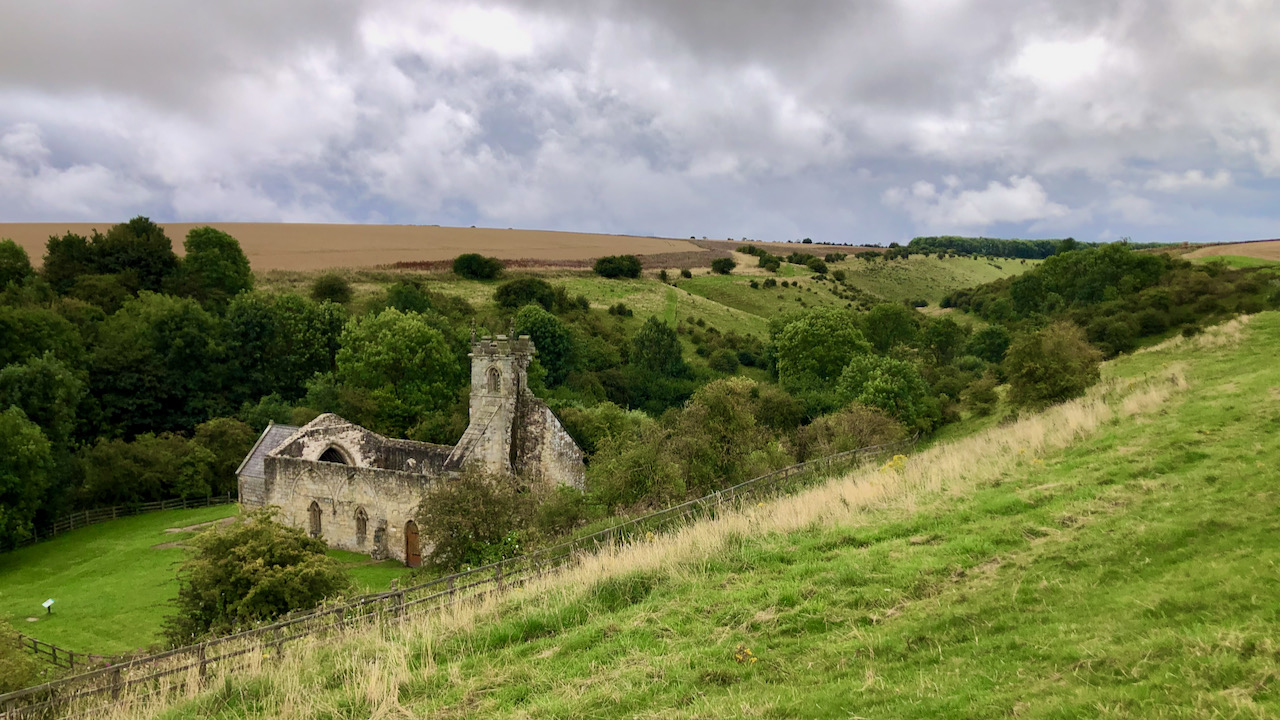In the realm of Scottish history, the Highland Clearances persist as a contentious period, evoking bitter sentiments to this day. The primary catalyst behind these displacements mirrored the fate of Wharram Percy, an abandoned medieval village, where the driving force was the ousting of tenants to make room for sheep.
Wharram Percy has earned its reputation as England’s most renowned deserted medieval village, but those seeking a nostalgic glimpse of the past might be disheartened. Initial impressions reveal nothing more than a grassy field with humps and bumps and a solitary 18th-century farmhouse.
However, soon the haunting remains of St. Martin’s church come into view, with its tower being the most poignant relic. Though it suffered a partial collapse some six decades ago, excavations have revealed a timber church dating back to the 12th century. It stands as the focal point of the deserted village, a haunting testament to devastation and loss, its ghostly silhouette looming over the nearby fishpond.
Originally known as Warran or Warron in the Domesday book, Wharram Percy later gained the additional “Percy” in tribute to the influential family of Norman barons who had become dominant landowners by the late 12th century. Other branches of the Percy family held land in Kildale and rose to become the Dukes of Northumberland.
Under the stewardship of the Percys, Wharram thrived, housing up to thirty crofts, despite facing challenges from attacks by the Scots and the Black Death. However, in 1400, the Percys exchanged ownership of the manor with Baron William Hilton of Sunderland, who then became the new landlord, though he likely never lived there. When this new lord passed away in 1436, the village continued to endure, but the writing was on the wall. The allure of sheep farming’s economic benefits had become increasingly evident, leading to the conversion of much of England’s arable land into enclosed pasture. Wharram’s days were numbered.
The year 1458 marked the beginning of the evictions. The inhabitants received their eviction notices, their homes were torn down or left to decay, and sheep took their place. Some residents may have sought more promising opportunities elsewhere and left of their own volition, while others were driven out by Baron Hilton. By the dawn of the 16th century, the village’s desertion reached its culmination, with only one farm clinging to existence.

Leave a Reply